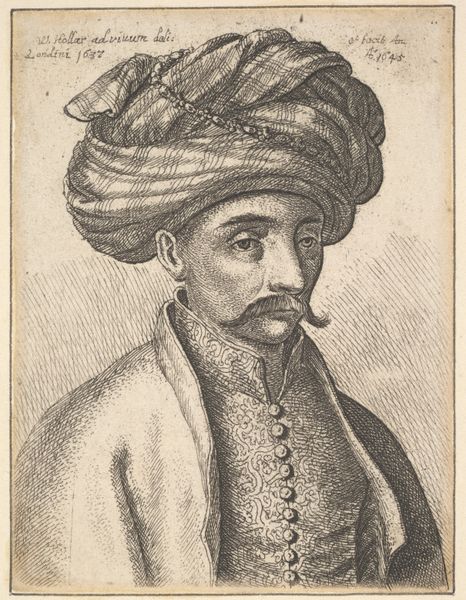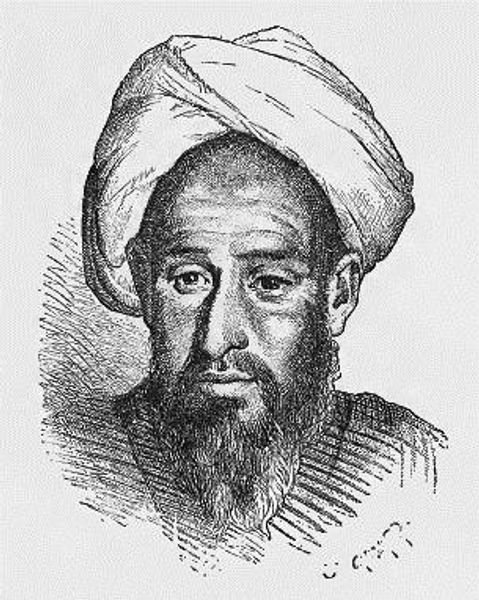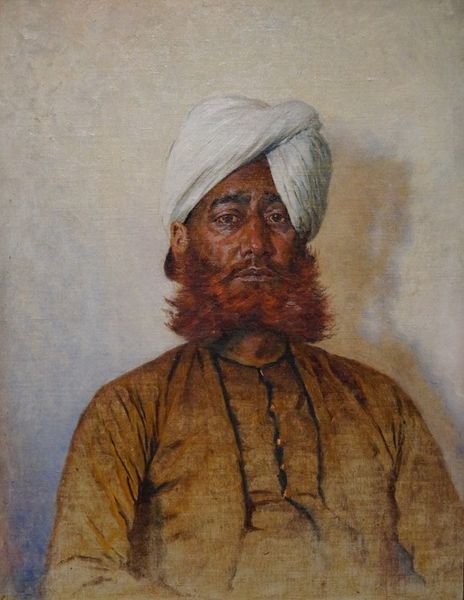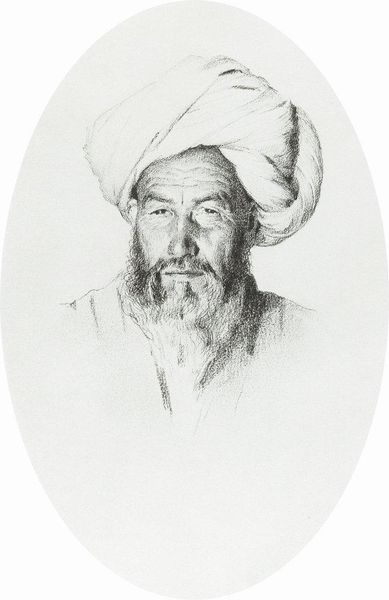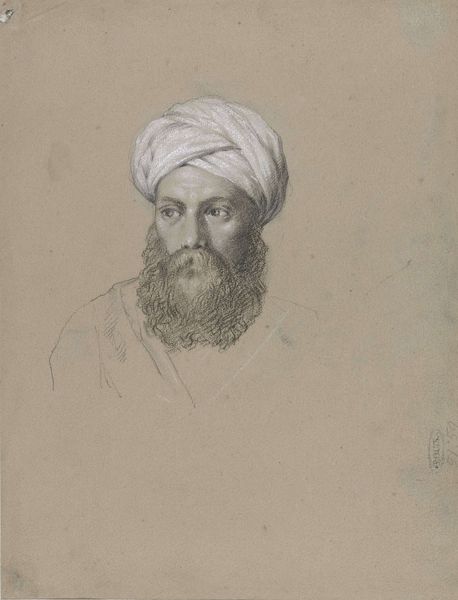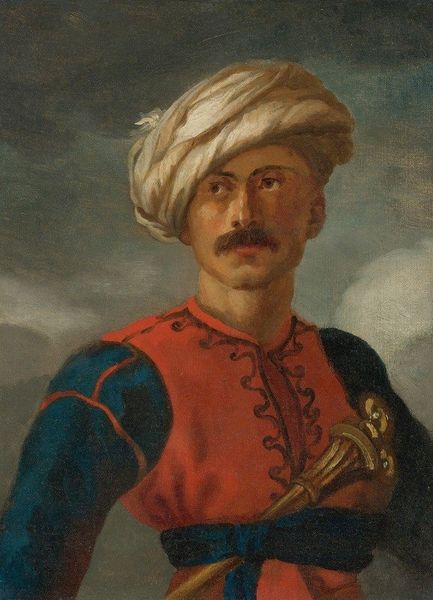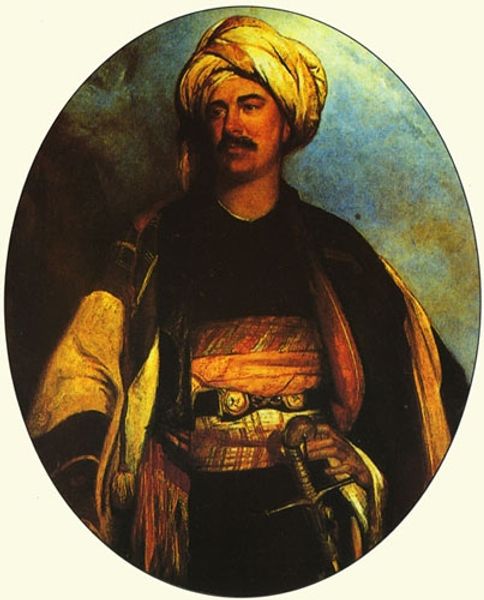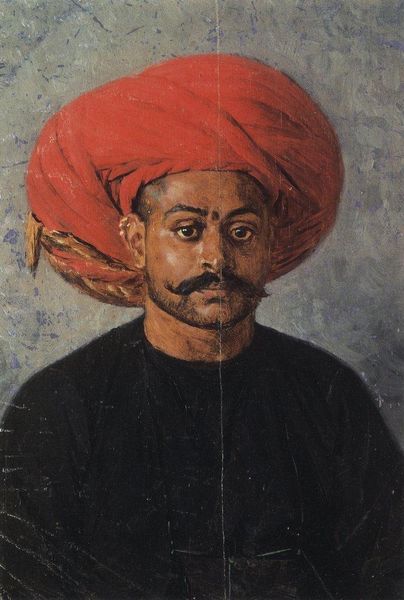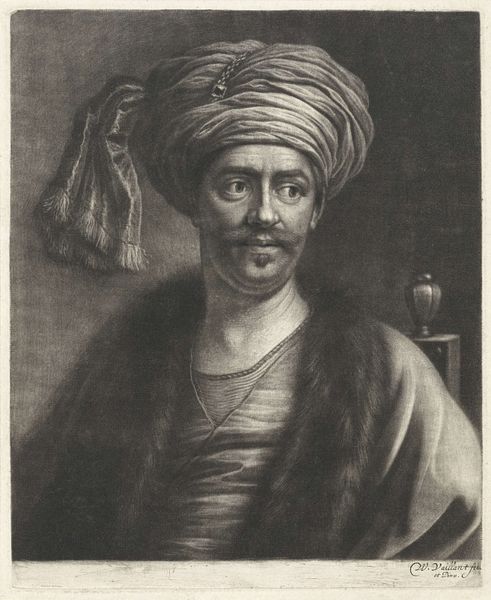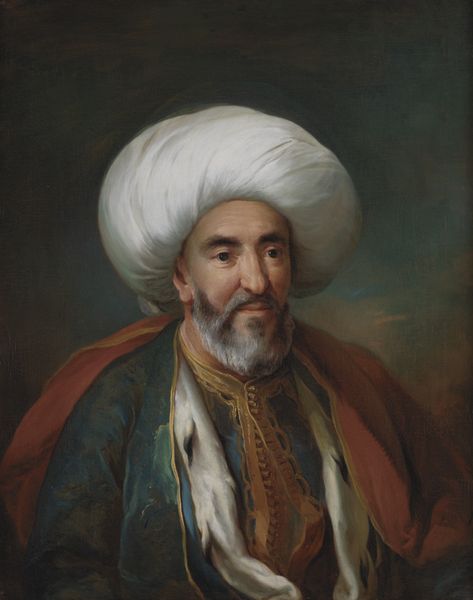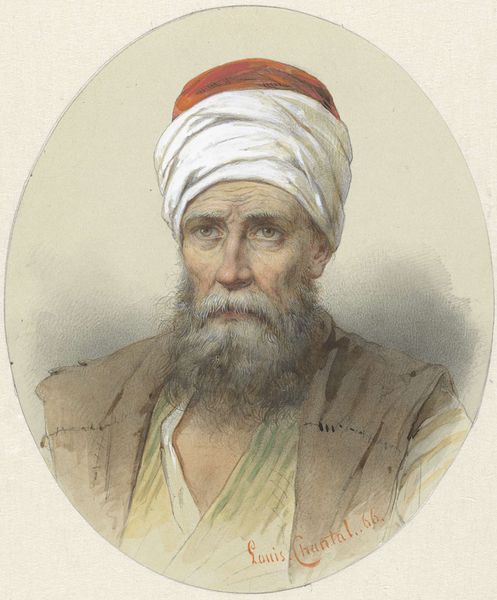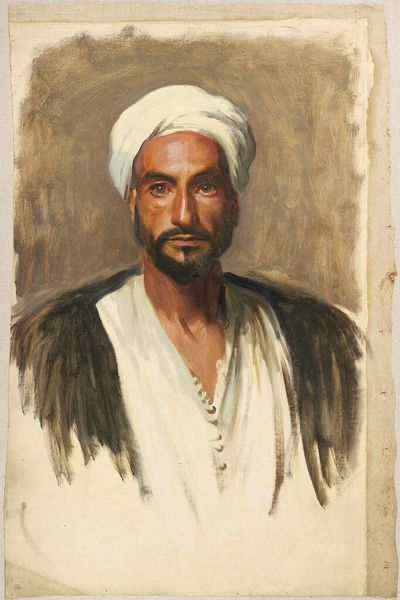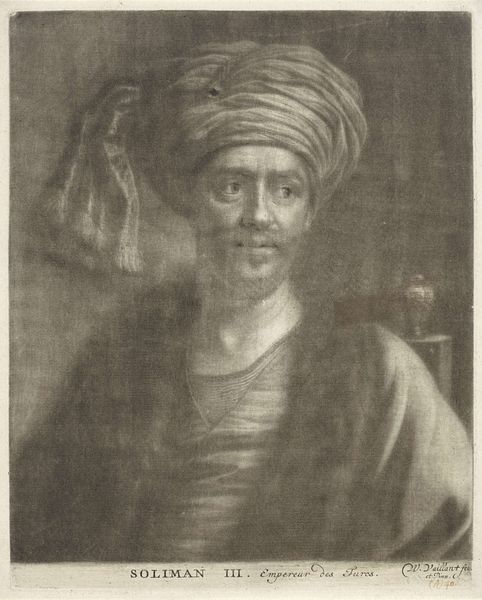
Copyright: Public domain
Editor: Here we have Vasily Vereshchagin’s "Portrait of a Man in a White Turban," painted in 1867 using oil. I’m struck by how the artist captures such a specific individual with what feels like a sensitive, almost tentative touch. What do you see in this piece? Curator: I see layers of cultural meaning embedded within a seemingly simple portrait. The turban, of course, is the most immediate visual symbol, rich in historical and religious significance. Do you know what the color white traditionally represents? Editor: Purity, perhaps? Or peace? Curator: Exactly. It often signifies spiritual purity and peace in many cultures. However, the way Vereshchagin renders the turban also speaks to something deeper. It's not just a headdress; it's a marker of identity, a repository of cultural memory. The subject’s gaze, direct yet gentle, seems to invite us to consider his inner world, shaped by the traditions he embodies. Does the painting perhaps echo Vereshchagin's travels in Turkestan? Editor: Oh, interesting! It makes me think about cultural exchange and representation. Are you suggesting that Vereshchagin is portraying more than just an individual, but a whole culture? Curator: Precisely! Artworks like these become powerful documents. They encapsulate a moment in time where identities, traditions, and artistic vision intersect, reflecting both the sitter and the painter's world. Editor: This really gives me a new appreciation for portraiture and the depth of stories that even seemingly straightforward paintings can tell! Thank you!
Comments
No comments
Be the first to comment and join the conversation on the ultimate creative platform.
